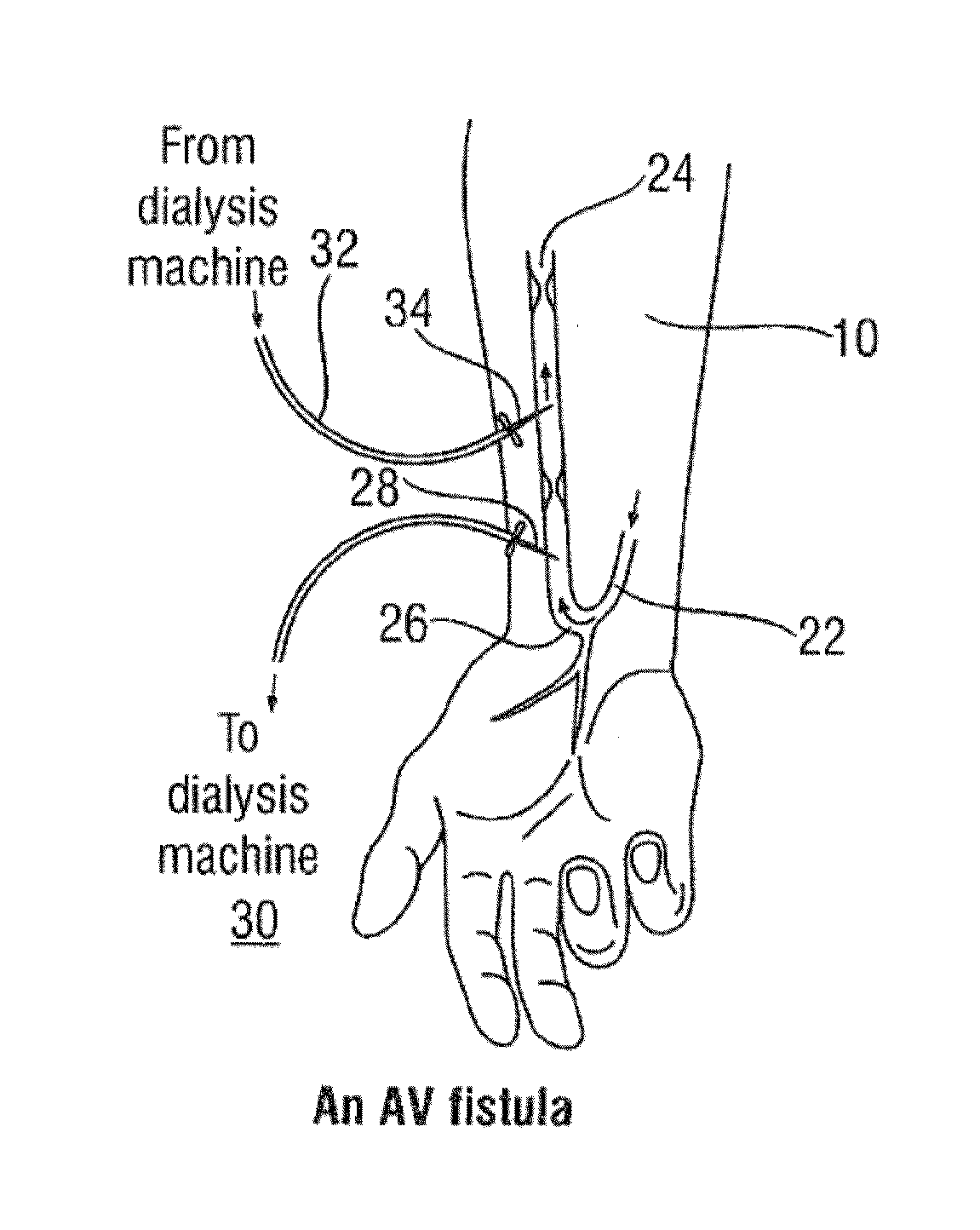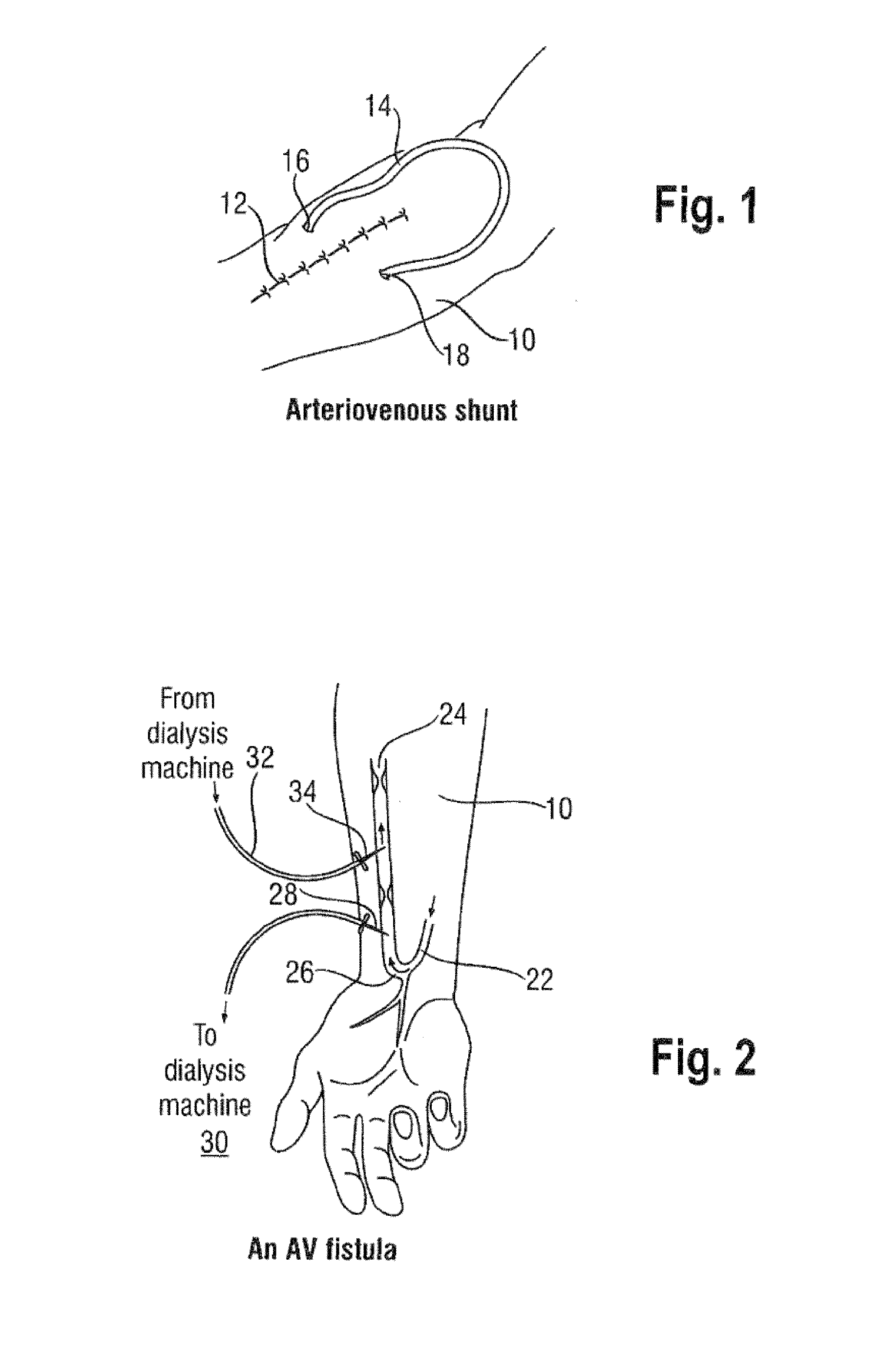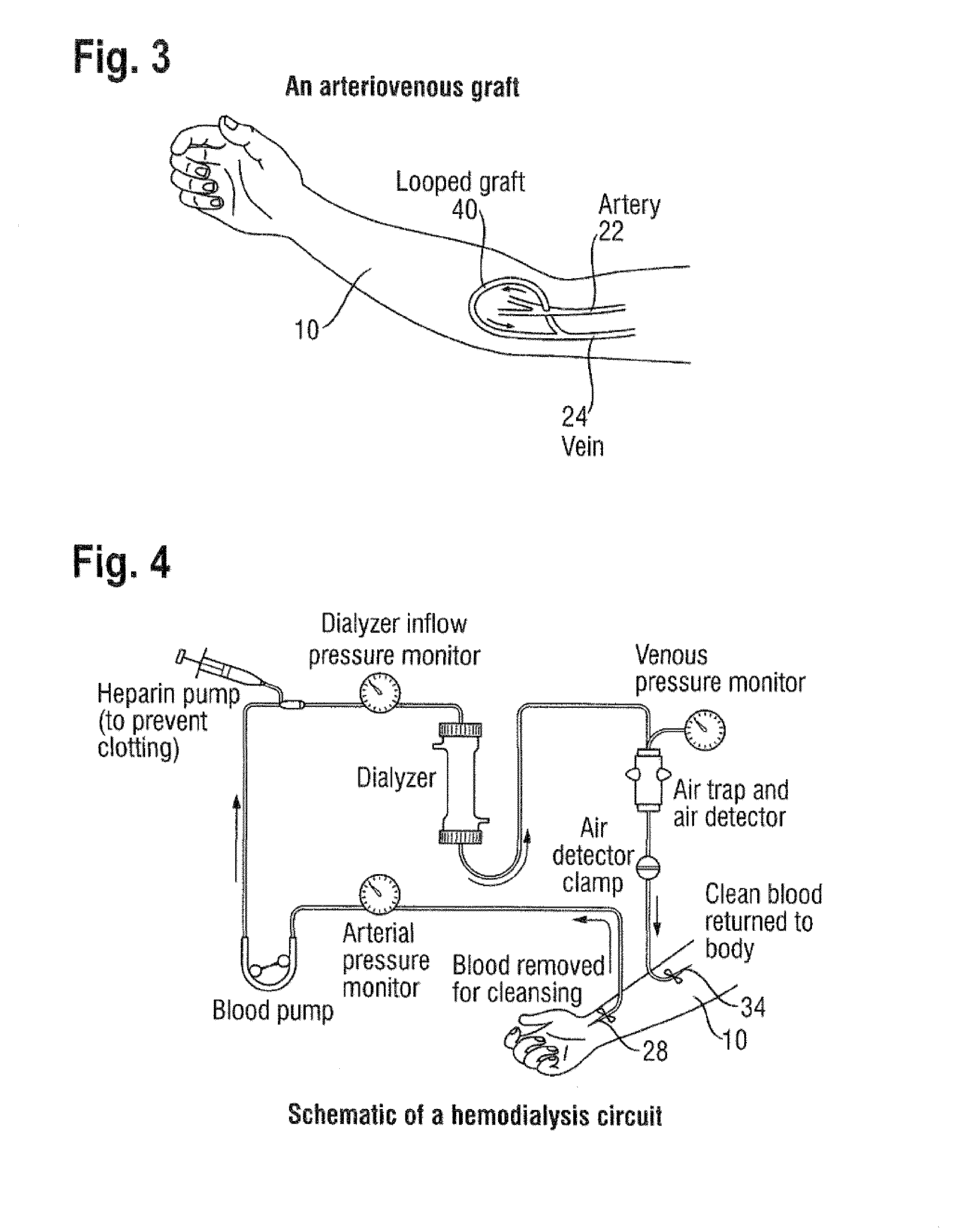Arteriovenous fistula
a technology of arteriovenous fistula and shunt, which is applied in the field of shunt, can solve the problems of loss of patency of those vessels, the sealing of the synthetic shunt wall, and the risk of infection, and achieve the effect of improving the sealing of the wall
- Summary
- Abstract
- Description
- Claims
- Application Information
AI Technical Summary
Benefits of technology
Problems solved by technology
Method used
Image
Examples
Embodiment Construction
[0037]Looking first at FIG. 1, there is shown a human forearm 10 with a stitched together long percutaneous slit 12 and an arteriovenous shunt 14 with one end 16 extending through a percutaneous puncture into an arterial lumen of the forearm, and an opposite end 18 extending through a percutaneous puncture spaced from puncture 16, and into a venous lumen of the forearm. The shunt intermediate length portion is external of the body and therefore available for access by dialysis needles. However, the puncture sites 16 and 18 render the arrangement less than ideal from an infection perspective.
[0038]Turning to FIG. 2, there is shown again the human forearm 10 and, diagrammatically, beneath the skin, an arterial lumen 22, a venous lumen 24 and, between them, an arteriovenous fistula 26. A first dialysis needle 28 taps blood for a dialysis machine 30 and a return flow channel 32 from the machine delivers blood back to the patient via a second dialysis needle 34.
[0039]Looking at FIG. 3, w...
PUM
 Login to View More
Login to View More Abstract
Description
Claims
Application Information
 Login to View More
Login to View More - R&D
- Intellectual Property
- Life Sciences
- Materials
- Tech Scout
- Unparalleled Data Quality
- Higher Quality Content
- 60% Fewer Hallucinations
Browse by: Latest US Patents, China's latest patents, Technical Efficacy Thesaurus, Application Domain, Technology Topic, Popular Technical Reports.
© 2025 PatSnap. All rights reserved.Legal|Privacy policy|Modern Slavery Act Transparency Statement|Sitemap|About US| Contact US: help@patsnap.com



